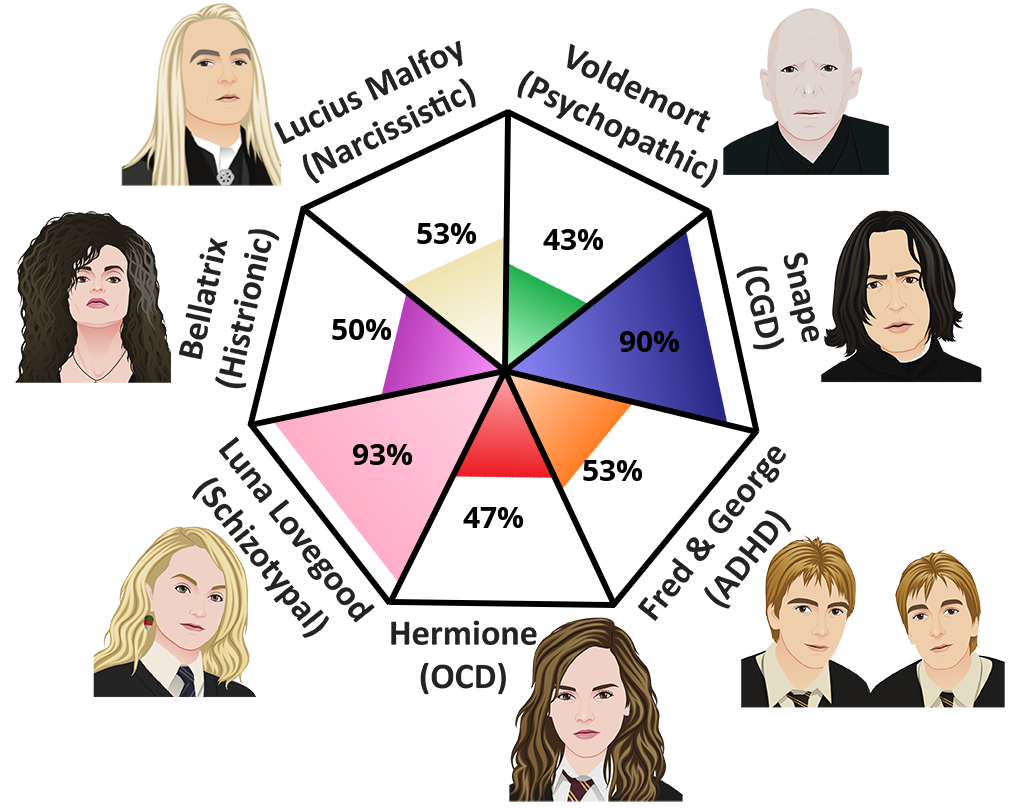Opal Star
Member
- Joined
- Aug 4, 2020
- Messages
- 516
- Enneagram
- 173
- Instinctual Variant
- sx/sp
This is an interesting test.
Link:
Potter Pathology Test
Results:
Bellatrix (Histrionic): 20%
Lucius Malfoy (Narcissistic): 77%
Voldemort (Psychopathic): 23%
Severus Snape (CGD): 50%
Fred & George (ADHD): 30%
Hermione (OCD): 83%
Luna Lovegood (Schizotypal): 20%
Your strongest result was Hermione.
Link:
Potter Pathology Test
Results:
Bellatrix (Histrionic): 20%
Lucius Malfoy (Narcissistic): 77%
Voldemort (Psychopathic): 23%
Severus Snape (CGD): 50%
Fred & George (ADHD): 30%
Hermione (OCD): 83%
Luna Lovegood (Schizotypal): 20%
Your strongest result was Hermione.

